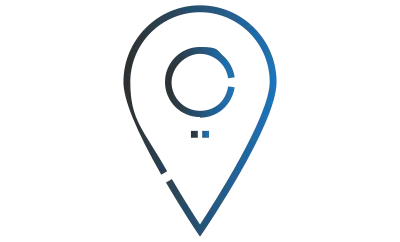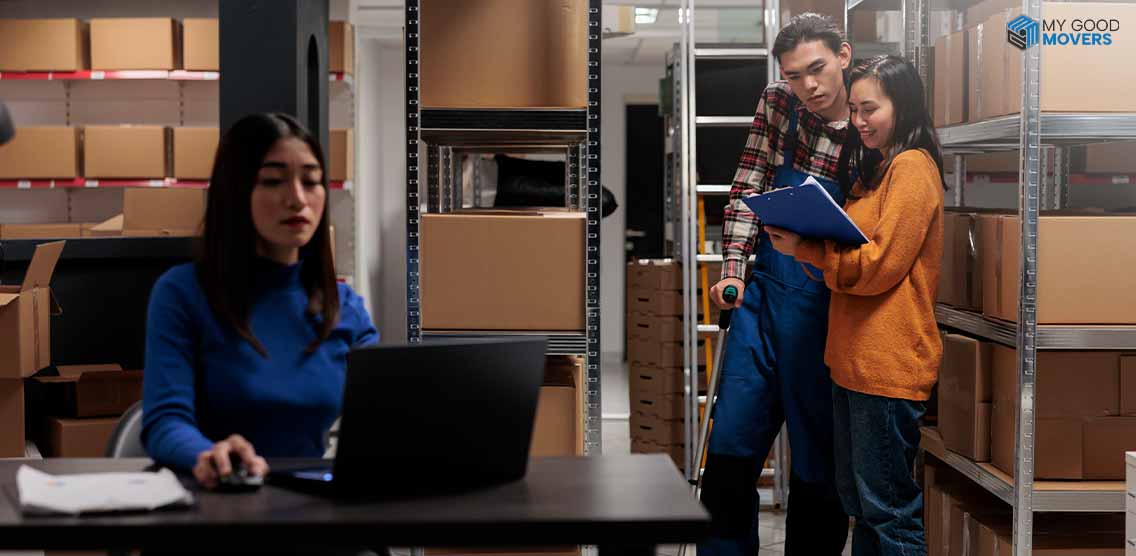The right storage unit isn't just about space — it's about peace of mind.
When you're preparing for a move, downsizing your home, or just clearing out extra clutter, finding the perfect unit can make your life a lot easier.
However, most people either overpay for excessive space or struggle with a unit that's too small; all because they didn't understand what size they truly needed.
That’s why you need this storage unit size guide to help you make the right decision the first time. Whether you're trying to figure out how big a 5x5 storage unit is or you're comparing larger spaces like a 10x15 storage unit, then this is your go-to guide.
With more than 49,000 storage facilities across the U.S. and millions of Americans relying on storage during relocation, choosing the right size is more than just guesswork; it's about saving money and avoiding stress.
According to industry data, the average storage unit cost per month can range from $60 for a 5x5 to $225 or more for a 10x20. So before you sign a contract, it's important to ask: how much is a storage unit, and more importantly, how much space do you really need?
Why Picking the Right Storage Unit Size Is Crucial
Many people rush into booking a unit without fully understanding their space needs, and that often leads to unnecessary costs or last-minute headaches.
Here’s why picking the right storage size matters more than you might think:
Avoid Overpaying
Renting a unit that’s too big means you’re paying for space you don’t need. Over time, those extra square feet can add up to hundreds of dollars in wasted monthly storage unit costs.
Prevent Running Out of Room
On the other side, choosing a unit that’s too small can leave you with a pile of boxes that won’t fit. You might end up upgrading to a larger unit — which means repacking, moving again, and spending more.
Stay Organized and Accessible
The right unit size gives you enough space to store your items and still have room to move around. That makes it easier to access what you need without digging through stacks of boxes or damaging anything in the process.
Match Your Storage Duration and Purpose
Long-term and short-term storage needs can be very different. If you’re storing furniture during a move, you might need a 10x10 storage unit or more. But if it’s just holiday decorations or files, a 5x5 storage unit might be enough.
Make Smart Use of Your Budget
When you understand how much a storage unit costs and what size gives you the best value, you can plan your move or storage needs more efficiently. A well-chosen unit saves money and keeps your items secure.
Quick Overview of Common Storage Unit Sizes
Storage units come in a variety of sizes, and each one is designed to serve a specific purpose.
Here’s a quick overview of the most common storage unit sizes, what they can hold, and when they’re typically used:
Small Storage Units
These units are best for boxes, seasonal items, small furniture, and belongings from one room or fewer.
5x5 Storage Unit
A 5x5 storage unit (or 5'x5') is roughly the size of a small walk-in closet. It’s ideal for people who need just a bit of extra space at home.
Size: 25 sq. ft. / 200 cu. ft.
Great for: Personal items, small furniture, several boxes, off-season clothing, holiday décor
Learn more: How big is a 5x5 storage unit?
5x10 Storage Unit
A 5x10 storage unit (or 5'x10') is the size of a walk-in closet or small room. It can fit the contents of a small studio apartment.
Size: 50 sq. ft. / 400 cu. ft.
Great for: Mattress set, dresser, nightstands, boxes, small appliances, sports gear
Learn more: How big is a 5x10 storage unit?
Medium Storage Units
These are ideal for one- to two-bedroom apartments, small homes, or when you’re storing multiple types of items.
5x15 Storage Unit
A 5x15 storage unit (or 5'x15') gives you more depth than the 5x10, making it perfect for a small apartment or large room.
Size: 75 sq. ft. / 600 cu. ft.
Great for: Bedroom set, bookshelves, boxes, bikes, home office items
Learn more: How big is a 5x15 storage unit?
10x10 Storage Unit
The 10x10 storage unit (or 10'x10') is one of the most commonly rented sizes. It’s about half the size of a standard garage.
Size: 100 sq. ft. / 800 cu. ft.
Great for: Furniture from a one-bedroom apartment, appliances, 100–150 boxes
Learn more: How big is a 10x10 storage unit?
10x15 Storage Unit
A 10x15 storage unit (or 10'x15') is spacious enough to store two to three rooms’ worth of items.
Size: 150 sq. ft. / 1,200 cu. ft.
Great for: Sofas, bedroom sets, dining furniture, TVs, large boxes, office furniture
Learn more: How big is a 10x15 storage unit?
Large Storage Units
These units can handle the contents of full homes, large apartments, or even business equipment and inventory.
10x20 Storage Unit
A 10x20 storage unit (or 10'x20') is about the size of a one-car garage. It’s great for people moving from a house or storing large equipment.
Size: 200 sq. ft. / 1,600 cu. ft.
Great for: Full home contents, appliances, outdoor gear, patio furniture, motorcycles
Learn more: How big is a 10x20 storage unit?
10x25 Storage Unit
The 10x25 storage unit (or 10'x25') offers ample space for those with major storage needs. It can even fit a small vehicle in some cases.
Size: 250 sq. ft. / 2,000 cu. ft.
Great for: Entire household storage, business inventory, garage items, equipment, trailers
Learn more: How big is a 10x25 storage unit?
Storage Unit Size Comparison Table
| Storage Unit Size | Size (Sq. Ft.) | Size (Cu. Ft.) | Approx. Space Description | What It Can Hold |
|---|---|---|---|---|
| 5'x5' | 25 sq. ft. | 200 cu. ft. | Small walk-in closet | Boxes, seasonal items, small furniture, and personal items |
| 5'x10' | 50 sq. ft. | 400 cu. ft. | Large closet or small room | Mattress set, small appliances, dresser, several boxes |
| 5'x15' | 75 sq. ft. | 600 cu. ft. | Large room or small apartment | Bedroom set, bikes, shelving, medium furniture |
| 10'x10' | 100 sq. ft. | 800 cu. ft. | One-bedroom apartment | Furniture, appliances, 100–150 boxes |
| 10'x15' | 150 sq. ft. | 1,200 cu. ft. | Two-bedroom apartment | Large furniture, TVs, a dining table, and multiple rooms of items |
| 10'x20' | 200 sq. ft. | 1,600 cu. ft. | Small home or multi-room apartment | Furniture, outdoor gear, and large appliances |
| 10'x25' | 250 sq. ft. | 2,000 cu. ft. | Large home or business inventory | Full household contents, vehicles, and commercial equipment |
Size Comparison Examples (Room-Based)
One of the easiest ways to figure out what storage unit size you need is by comparing it to the space you already know — like the rooms in your home.
Here’s a breakdown to make the decision easier:
Studio Apartment
- Recommended Unit: 5x10 storage unit or 5'x10'
- Why it fits: A studio typically has a small bed, a few pieces of furniture, and boxes of personal items. A 5 x 10 storage unit offers enough space to fit everything snugly.
- Also consider: If you're storing minimal furniture or mostly boxes, a 5x5 storage unit may be enough.
1-Bedroom Apartment
- Recommended Unit: 5x15 storage unit or 10x10 storage unit
- Why it fits: You'll need space for a bedroom set, a sofa, a TV stand, a dining table, and several boxes. A 10 x 10 storage unit gives you room to stack and organize without feeling cramped.
-
Bonus tip: Want to save on storage unit costs? If you're good at packing vertically, a 5 x 15 storage unit might do the job.
2–3 Bedroom Apartment or Small House
- Recommended Unit: 10x15 storage unit or 10'x15'
- Why it fits: This size gives you enough room for multiple bedrooms’ worth of furniture, large appliances, and about 200 boxes.
- Common use: Perfect for families moving between homes or those storing during renovation.
3–4 Bedroom House
- Recommended Unit: 10x20 storage unit or 10'x20'
- Why it fits: Full home setups — including living room furniture, bedroom sets, kitchen appliances, and large items like lawnmowers — fit comfortably in a 10 x 20 storage unit.
- Estimated need: Around 1,600 cubic feet of space.
Full House or Business Inventory
- Recommended Unit: 10x25 storage unit or 10'x25'
- Why it fits: This unit can hold the contents of a large home or office, including shelving, desks, file cabinets, and large inventory stock.
- Also ideal for: Contractors, eCommerce businesses, or people relocating out of state with a full household.
Room-Based Storage Unit Size Comparison
| Home Size / Room Type | Recommended Unit Size | What It Can Hold |
|---|---|---|
| Studio Apartment | 5x10 or 5'x10' | Bed, small furniture, kitchen items, boxes |
| 1-Bedroom Apartment | 5x15 or 10x10 | Bedroom set, sofa, dining table, appliances, 50–100 boxes |
| 2–3 Bedroom Apartment / Small House | 10x15 or 10'x15' | Multiple bedroom sets, large furniture, appliances, 150–200 boxes |
| 3–4 Bedroom House | 10x20 or 10'x20' | Entire household contents, garage items, outdoor gear, large boxes and appliances |
| Large House / Business Inventory | 10x25 or 10'x25' | Full home or office setup, inventory, equipment, vehicles (in some cases) |
Storage Unit Sizes and Prices - What to Expect
While choosing the right size is important, cost is just as crucial when planning for a storage unit. Prices can vary widely depending on unit size, location (urban, suburban, rural), features like climate control or drive-up access, and additional fees.
Here’s a general idea of what you can expect to pay:
| Unit Size | Urban Area | Suburban Area | Rural Area | Climate-Controlled |
|---|---|---|---|---|
| 5x5 | $70–$120 | $50–$80 | $40–$60 | +20–50% |
| 5x10 | $90–$150 | $60–$100 | $50–$80 | +20–50% |
| 10x10 | $130–$200 | $100–$150 | $80–$120 | +20–50% |
| 10x15 | $150–$250 | $120–$180 | $100–$150 | +20–50% |
| 10x20 | $200–$350 | $150–$250 | $130–$200 | +20–50% |
| 10x30 | $250–$450 | $200–$300 | $180–$250 | +20–50% |
For a complete cost breakdown with all features and fees, read our full guide on storage unit pricing.
How to Choose the Right Storage Unit Size
Choosing the right storage unit size doesn’t have to be overwhelming. With a little planning, you can figure out exactly how much space you need and avoid paying for a unit that’s too big or too small.
Here’s a simple step-by-step guide to help you make the best choice:
Take Inventory of What You’re Storing
Start by making a list of everything you plan to put in storage. Are you storing boxes only? Furniture? Appliances? Outdoor gear? Knowing what you’re storing will help you narrow down whether a 5x10 storage unit will work, or if you need something larger, like a 10x15 or 10x20.
Measure Large Items
Don’t just guess; measure the biggest pieces, like mattresses, couches, tables, and appliances. Add up the total space they’ll take up, including height. Most storage units have 8-foot ceilings, so you’ll want to think about both square footage and cubic footage.
Think About Accessibility
Do you need to access your items often? If so, don’t pack your unit to the ceiling. Leave space to walk around. In that case, you might want to size up; for example, if you think a 10x10 storage unit is “just enough,” consider going with a 10x15 storage unit to give yourself more flexibility.
Consider the Cost
Unit size directly impacts storage unit costs. Ask yourself: How much is a storage unit in your area? A 5x5 may cost as little as $60/month, while a 10x25 can go over $250/month.
Use a Storage Calculator
Some facilities offer online tools that allow you to input what you're storing, and they will estimate the best size for you. These tools can be helpful, especially if you're unsure which storage size makes more sense.
Pro Tips for Maximizing Storage Space
No matter what storage unit size you rent, using the space wisely can make a big difference. A well-packed unit not only saves you money but also protects your belongings and keeps everything accessible.
Here are some smart, practical tips to help you get the most out of your storage unit:
Pack Vertically
Make use of the full height of your unit. Most units are at least 8 feet tall, so stack boxes all the way up, just make sure heavier boxes are on the bottom and lighter ones on top.
Disassemble Furniture
Disassemble beds, tables, and shelving to save space. Store legs and screws in clearly labeled bags and tape them to the furniture frame so nothing gets lost.
Leave a Walkway
It might be tempting to pack everything wall-to-wall, but leave a small path down the center. This way, you can easily access items without unloading the entire unit.
Use Same-Sized Boxes
Stick to one or two box sizes so they stack evenly and safely. This helps you avoid wasted space and keeps everything stable. Use clear labels on each side so you know exactly what’s inside.
Store Items Inside Other Items
Maximize your space by filling drawers, suitcases, and bins with smaller items. For example, put linens in dresser drawers or tools in an empty cooler.
Clean and Cover
Clean appliances and furniture before storing them. Use covers to protect against dust and damage, especially in long-term storage situations.



































 (239) 799–6077
(239) 799–6077